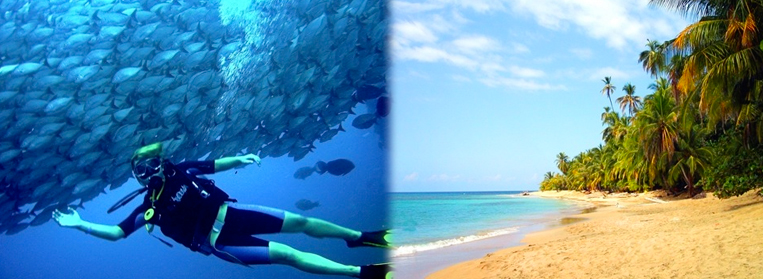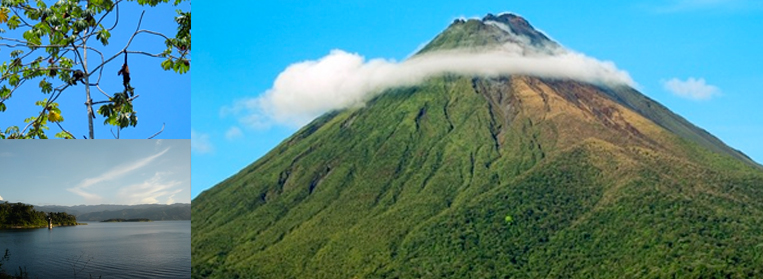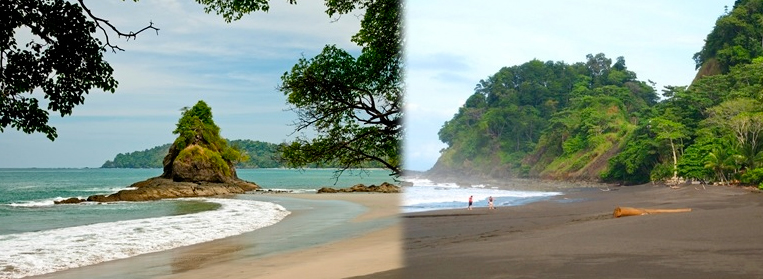GENERAL INFORMATION

CENTRAL VALLEY
San Jose, Alajuela, Cartago, Heredia, Poas & Irazu Volcanoes
Discover with us the region of Costa Rica with the most economic activity, where two thirds of the population resides, and the governing cities of the beautiful provinces of San José, Alajuela, Heredia and Cartago are situated, each with privileged characteristics and a wide variety of services, converting them into unique places which impress from the first moment. The main part of the manufacturing and financial industry, the Juan Santamaría International Airport, major buildings, universities, medical centers and commercial complexes are located in this area. The Central Valley has a dry season from December to May and the heaviest of the rains fall between August and October. It should be noted that even in the dry season there are some rains, being that the country lies in the tropical zone of the planet. The average temperature is approximately 20°C (70°F) and can descend to 10°C (50°F) in the highlands.
For those seeking a tranquil environment near the capital, or those who prefer to enjoy of the advantages of a city style vacation, the central valley offers a great variety of alternatives in lodging, sites of interests to tourists, natural attractions, restaurants and nightlife. The one day tours that can be enjoyed from this area operate daily with regular departures from the main hotels of San José, each allowing you to experiment the three main components of the magic of Costa Rica: its varied natural wealth, the friendliness of the Costa Ricans, and its unequaled tropical flavor.

MONTEVERDE
Cloud Forests, Hanging Bridges, Canopy and more
The town of Monteverde, located at the south end of the cloud forest, had its beginnings in the early 1950s with the impetus of a group of Quakers from the United States, a group that came to Costa Rica attracted by its pacific inclinations and disarmament. They established themselves in the region and devoted themselves to produce milk and quality cheeses.
The “Bosque Nuboso” (Cloud Forest) Biological Reserve is recognized throughout the world for the golden toad, a species in danger of extinction. This wildlife area has been created to protect the flora and fauna, as well as to carry out scientific studies and educational environmental programs.
Within its borders 400 species of birds, including the Quetzal, 490 species of butterflies, 100 of mammals, 2,500 of plants and 200 of ferns have been identified. Monteverde and Santa Elena offer ample possibilities for lodging and eating. Monteverde is located 172 kilometers northeast of San José. The climate is template and humid, with and average of 17ºC (60ºF). The nights are cool and at times cold when the trade winds blow.

CARIBBEAN REGION
Tortuguero, Limon, Manzanillo, Paquere & Puerto Viejo
The fascinating afro-caribbean culture (mainly a combination of Jamaican, Italian and Chinese immigrants), predominates in this region and fills the atmosphere with fragrances, tropical rhythms and brilliant colors, which mixes with the daily work of many of the inhabitants on the banana plantations and the ports of Limón and Moín. It is the region of most rainfall in the country and this factor, combined with high temperatures, makes the evaporation and humidity quite high throughout the year. The extensive plains are washed by the Pacuare, Estrella, Reventazón and Parismina rivers, which join in some sectors with the Tortuguero canals, of great importance for their scenic beauty and as a site of refuge for the marine turtles to lay their eggs.
Tortuguero
Along the length and width of this area you can observe small groups of houses among the plantations of cassava, annatto, and bananas, as well as an infinite number of beautiful beaches on the southern part of the coast, coral reefs, and protected areas with small trails which permit penetration into the heart of the tropical forest. In the Costa Rican Caribbean the options are so varied that they satisfy plenty of the different tastes and preferences of those who visit it, while experiencing the wonders of the swamps, the marine wealth, green lagoons, imposing rivers, wide canals, and the unique majesty of the solitary Uvita Island.
For those who love fishing, diving, surfing and snorkeling, this place is undoubtedly an earthly paradise. Daily tours to the Tortuguero area leave from San José. These are complete packages including meals, transportation and short boat rides to observe the native flora and fauna of the region. A two night stay is recommended.

NORTHERN REGION
Arenal Volcano, La Fortuna, San Carlos
To the northeast of the Central Valley, this region includes a large part of the provinces of Alajuela and Heredia, extending to the north to the border of the province of Guanacaste. The rains and cloudiness are characteristic of this zone throughout the year, nevertheless, from February to April there is a noticeable decline in the amount of precipitation and the number of rainy days. The whole region portrays an important economic growth due to its agriculture production and the surge of tourism, mainly in Sarapiquí, San Carlos (famous for the Arenal Volcano), and San Ramón. Each of these places offers special qualities that differentiate them and put them in a privileged position in the country.
Sarapiquí stands out for its primary forests, swamps, and plantations, in a biologically right territory, with temperatures that oscillate between 26°C and 28°C; a hot, humid land which can be explored by way of the dense network of trails within the protected areas which are of great importance for the conservation of birds, butterflies, felines, insects and plants. San Carlos offers a landscape of exceptional beauty with its forests, lagoons, fields of crops, rivers with hot springs, and the most active volcano of Costa Rica: Arenal. In other words, sanctuaries where one can breathe peace, purity and the majestic power of nature. The San Ramón section, famous for its tropical cloud and rain forests in the highlands, is noted for its variety of epiphytes, mosses and ferns, and is home to more than 225 species of birds.

NORTHERN PACIFIC
Guanacaste, Papagayo & Tamarindo Beaches
The province of Guanacaste encompasses dry, wet and very humid forests, including the protected areas of the few remnants of the tropical dry forests which once extended from Mexico along all the Pacific coast, and which today has practically disappeared from the Mesoamerican scenery.
The region of the north Pacific is a land of beautiful landscapes made up of bays, gulfs, hills splattered with forests and cliffs, panoramic routes, volcanoes, wild rivers, beautiful beaches of gray, fine dark, white and golden sands bathed by a blue sea of clear waters, rich in fishes and seashore birds, with mainly of gentle waves.
The climate is very hot and dry during the summer, which tends to extend from December to April, and hot and humid during the rest of the year. The average annual temperature is 27,5ºC. Guanacaste is blessed with landscapes of plains and dusty dry coast from January to April and very green and wet during the rainy season. In this idyllic region the positive energy of the radiant sun, which shines long hours of the day, combines with the hot temperatures, inviting you to enjoy the warm waters and the blue sea. Visit the national parks while on the beach!

CENTRAL PACIFIC
Manuel Antonio National Park, Jaco Beach, Quepos & Punta Arenas
The Central Pacific possesses the beaches closet to the capital city. Among the best known are Punta Leona, Playa Jacó, Herradura, the Manuel Antonio National Park and Playa Dominical. They enjoy the characteristics of a very hot and humid climate, with a season of brilliant sunshine from December through the end of April and warm waters all year long. Hills covered with green forests compose the common landscape of the area. Some of the features which have made Manuel Antonio one of the places most preferred by the tourists are the white sand beaches, cliffs, rivers, rain forests, the large variety of animal life, and the hot climate.
The Manuel Antonio National Park is home of the white faced capuchin, mantled howler and red-backed squirrel monkeys, two and three toad sloths, among other mammals, as well as a number of species of birds. Punta Catedral (cathedral point), the bay of Puerto Escondido (hidden port), and the beautiful beaches with blue green waters represent some of the main attractions of this park. The road from the central valley to this area winds through areas of very diverse scenery from cattle grazing and crocodiles in the Grande de Tárcoles River, to the plantations of oil palms in Parrita.

SOUTHERN PACIFIC REGION
Corcovado National Park, Playa Corcovado, Osa Peninsula & Sierpe
Considered one the most virgin regions of the country, the south Pacific encompasses one of the areas of major biodiversity in Costa Rica, the Corcovado National Park. Nature in its maximum expression… alive, exuberant, greened in every detail of the jungle growth. This, and more, is offered in the region that extends from the Barú River to the Panamanian border, and from the Talamanca mountain range to the Pacific coast. In this territory there are lagoons, mangroves, rivers, rain forests, lowland cloud forests, and 46 kilometers of sandy coastline. The south Pacific zone is rich in flora and fauna, and its environment serves as a refuge to animals in danger of extinction such as the tapir, panther, and scarlet macaw. The forests are tall and dense. <
In the Corcovado area 500 species of trees, 140 of mammals, 367 of birds, 40 of fresh water fish, 117 of amphibians and reptiles have been identified, and it is estimated that some 6,000 species of insects are to be found. The climate is humid and hot on the coast, plains and in the valleys. In the highlands predominates cool weather due more to the cloudiness than the altitude. The torrential rains fall mainly from mid April to December and there is a brief dry season from February till the first week of April. From San José it will take approximately eight hours by land to get to the region: the best and fastest way to get to the southern Pacific is taking a local flight from San José and landing in Palmar Sur or Puerto Jiménez. Here you will be able to dive and fish. The majority of the hotels located in this area offer packages for several days which include local flights from and to San José, transport, lodging, all meals, and tours.



